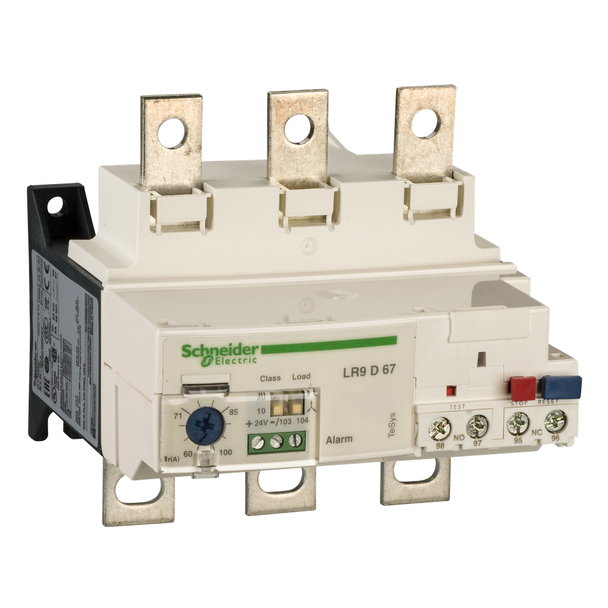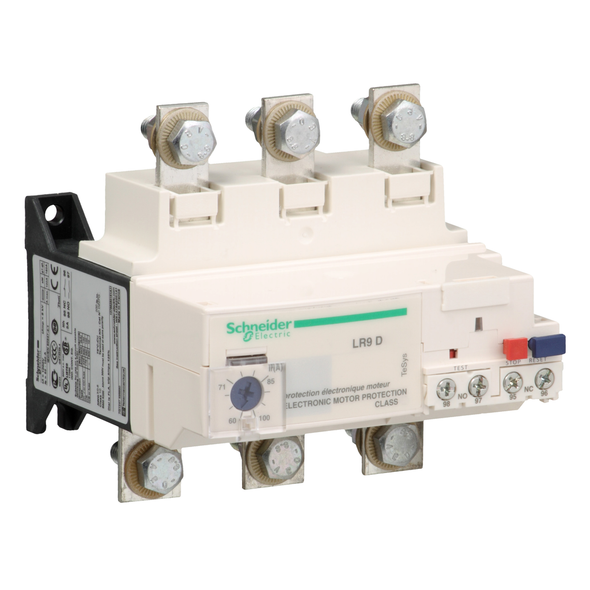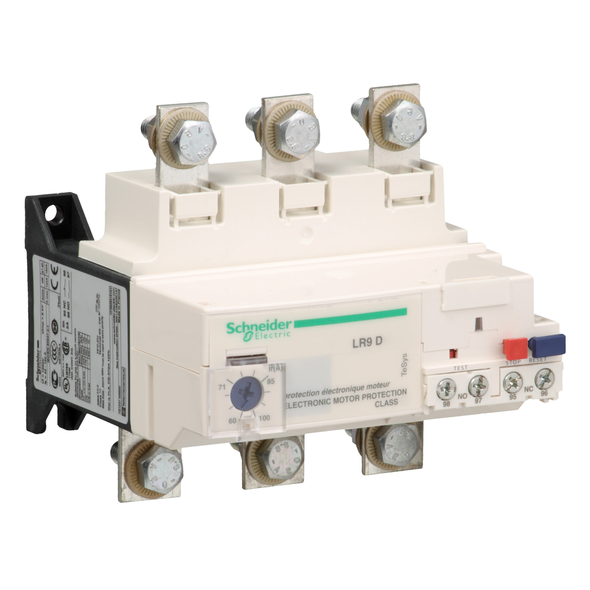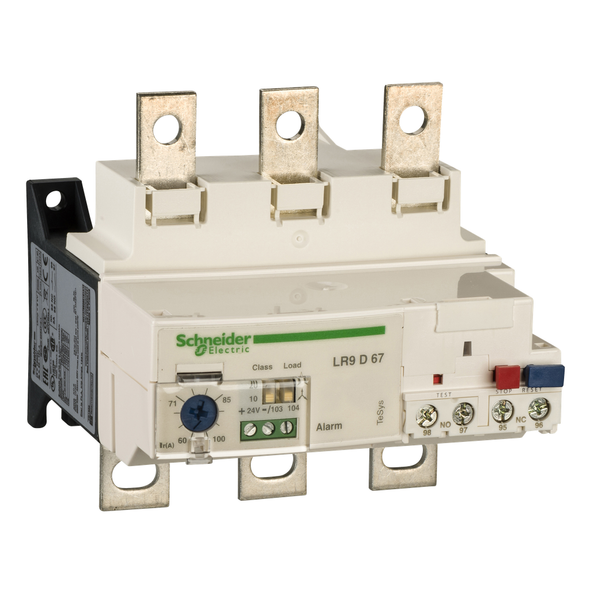Description
LR9D67 is a TeSys LR9D electronic overload relay from Schneider Electric to be used with a TeSys D contactor. With a thermal range 60-100A, selectable tripping class 10-20, it protects motors 37 to 45kW@400V, for unbalanced loads. LR9D67 is a TeSys LR9D electronic overload relay from Schneider Electric to be combined with a TeSys D contactor. With a thermal setting range 60-100A and a selectable tripping class 10-20, it protects unbalanced loads and motors 37 to 45kW@400V. It provides manual test & reset buttons, automatic reset, trip auxiliary contact and flag indicator, a pre-alarm circuit. Available worldwide, it is multi-standards certified (IEC, UL, CSA, CCC, EAC, Marine) and Green Premium compliant (RoHs/Reach). Thermal overload protection, electronic type, for use with unbalanced loads (non differential), self powered (no external power supply needed). To be combined with Tesys LC1D115-D150 contactors. Light and compact, 120mm wide. Manual control with test & reset buttons, manual / automatic reset selector. High accuracy, temperature compensated to keep a precise tripping over the ambient temperature range. Selectable tripping class 10 or 20. Trip signaling with 1NO+1NC auxiliary contacts and trip flag indicator, pre-alarm signaling circuit at 105% thermal level. 90% reduction in energy dissipation compared to a thermal overload relay.
View AllClose










